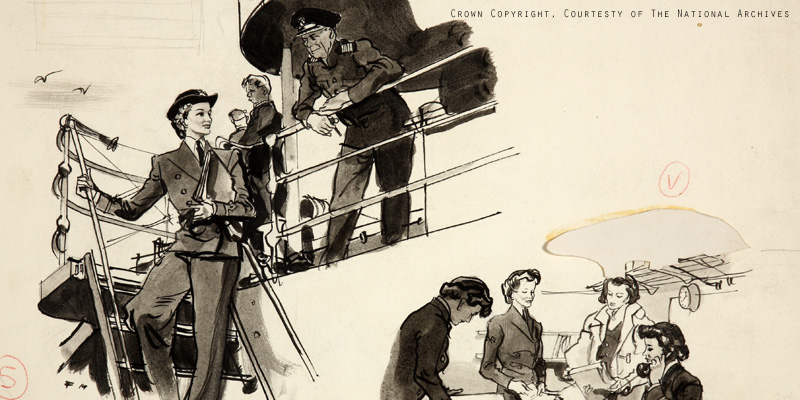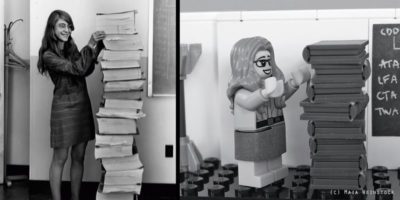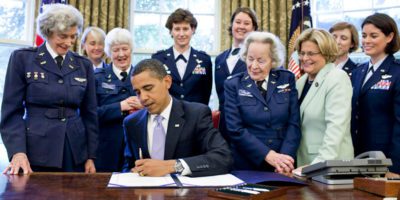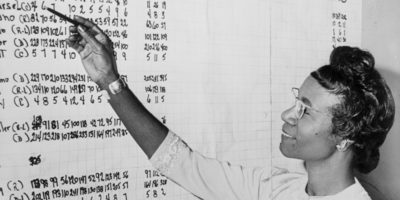Louise Bell is First World War Diverse Histories Researcher at The National Archives in London. She has specialist knowledge of the Women’s Royal Naval Service, widely known as the WRNS, which was formed in 1917 as a branch of the Royal Navy.

“…That they managed to prove their worth and were increasingly given more roles and responsibilities as the years went on is a testament to the work they undertook in these two main conflicts…”
The importance of diverse histories
I have been working as the First World War Diverse Histories Researcher at The National Archives for the past year and a half, give or take a month. I can’t say that I intentionally stumbled into the role, it was more my desire to be doing work related to the First World War which brought me here.
I always did enjoy the research aspect of being at university, and very much focused on an area which could be deemed “diverse histories” during my Masters, where my dissertation focused on those British men who had lost limbs during the conflict. At this stage in my life, I had never considered “diverse history” as an area, and just knew that I was looking into something which had been under-researched and in which I was interested. Now, I realise, this is the point of my role here.
My main area of focus here, and I guess you could say my comfort zone, is medicine in the First World War, with a focus on disability. However, my research can range from women, to the Indian Labour Corps, to First World War poetry. It’s never dull and I can definitely say that I’m very lucky to have landed such a role.
My role on a day to day basis
My days at work are always pretty varied. My role involves everything from going to meetings and answering emails, to planning and organising events, and everything in between. The main focus of my role is naturally research. It’s always great getting to go and look at documents – I’m not sure that will ever get old.
However, research doesn’t just cover that – there are also the equally fun aspects of getting to visit other institutions and attend events in order to increase my knowledge, make contacts, and gain ideas for future undertaking at The National Archives.
A lot of my time is also taken up by considering the appropriate outputs for the research I have undertaken. This could be planning and organising an event, writing a blog, or proposing a display for our onsite museum, the Keeper’s Gallery.
Guardians of some of the UK’s most iconic national documents
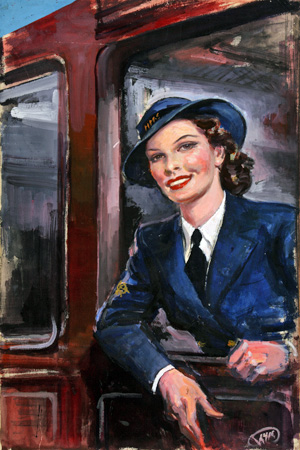
The National Archives is one of the world’s most valuable resources for research and an independent research organisation in its own right. As the official archive and publisher for the UK Government, and England and Wales we are the guardians of some of the UK’s most iconic national documents, dating back over 1,000 years.
Our role is to collect and secure the future of the government record, both digital and physical, to preserve it for generations to come, and to make it as accessible and available as possible. The National Archives brings together the skills and specialisms needed to conserve some of the oldest historic documents as well as leading digital archive practices to manage and preserve government information past, present and future.
Formation of the Women’s Royal Navy Service in 1917
Women who were recruited into the Women’s Royal Navy Service (WRNS) could choose to fill mobile or immobile positions. Immobile meant that they stayed in the one area and undertook their duties there; mobile meant that they were willing to move around.
Initially, they undertook more domestic duties such as cooking and cleaning. They later expanded to a greater variety of roles – for example, wireless telegraphists and electricians. Most were given a trade category. These were denoted by blue non-substantive trade badges worn on the right arm.
A scallop shell indicated a household worker; a three-spoked wheel was for a motor driver; an arrow crossed by a lightning flash was for a female working in signals; crossed keys indicated a storekeeper, porter or messenger; crossed quill pens were clerical staff and accounts; an envelope was for a postwoman or telegraphist; crossed hammers equalled a technical worker; and a star was for miscellaneous.
Women working in a man’s world
Our records focus on the more official, government aspect of things. Therefore, it is rather difficult to be able to interpret what women who were trying to work in an area such as this would have been feeling.
An insight into their lives working in such a male dominated area might come from the following example of a form held within our collections. In the ‘Questions As To General Health’ section of the recruitment form, the following question is asked: ‘Have you ever had a fit or a faint?’ It would never even be considered to ask a man such a thing. Such a question certainly doesn’t appear on similar forms which we hold for men who were wishing to join the Navy.
A few questions below that comes the following: ‘Are your periods regular?’ which is further broken down into ‘Date of last period?’ and ‘Does your period interfere with your work?’.
Post WWI into WWII and beyond
The WRNS were disbanded in 1919, at which point they could count some 5,500 members. They were reformed in 1939 with the outbreak of the Second World War, with an even more varied list of activities which they could undertake. These new roles included things such as: radio operators, meteorologists and bomb range markers.
At their peak, in 1944, the numbers of WRNS officers and ratings were 74,000. Post-Second World War, a small number of permanent WRNS positions were retained (3,000 of them). These were mainly administrative and support roles at Royal Navy establishments, both in the UK and overseas. The service was finally integrated into the Royal Navy in 1993. Then, women of any rank were able to serve on board naval vessels as full members of the crew.
Never forget
With regards to the WRNS, I think it’s important to remember stories of the women who served, especially someone like that of Josephine Carr. Carr was the first member of the WRNS to die on active service, when the ship she was on, RMS Leinster, was torpedoed. Her service record reads “D.D.” under reason why discharged, which stands for “discharged dead” – something which is a very rare sight in records relating to the WRNS in the First World War.
That they managed to prove their worth and were increasingly given more roles and responsibilities as the years went on is a testament to the work they undertook in these two main conflicts.
Events and activities moving forward
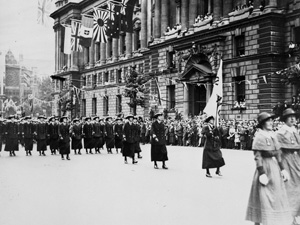
March seems to be the month where my main focus is the WRNS. On 17th March, I will be taking part at an event in collaboration with, and being hosted by, the National Museum of the Royal Navy in Portsmouth. More information can be found about this here.
I have also been organising an event here at The National Archives, which will look at the role of women in the war with the primary focus being on the Women’s Army Auxiliary Corps, and the WRNS. Naturally, the WRNS will be the topic which I will be presenting on.
There will also be a display in the Keeper’s Gallery relating to the WRNS in the First World War – which will use facsimiles of original documents held here to highlight the role these women played. Josephine Carr’s service record will be available to view in this display. As well as this focus on women, I will be returning to my comfort area of medicine and the First World War.
More information about all of our events and exhibitions can be found on our website and on our Eventbrite page.
http://www.nationalarchives.gov.uk/
https://twitter.com/UkNatArchives
https://www.facebook.com/TheNationalArchives

